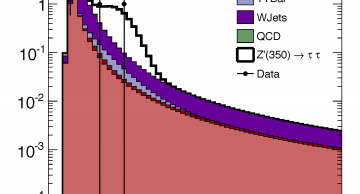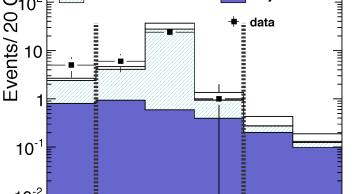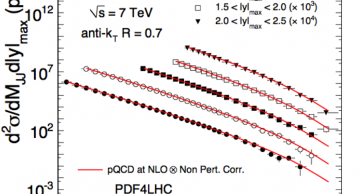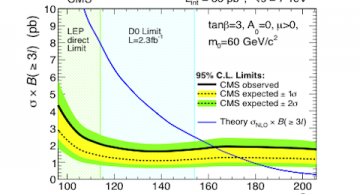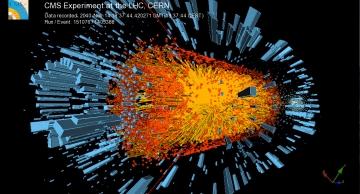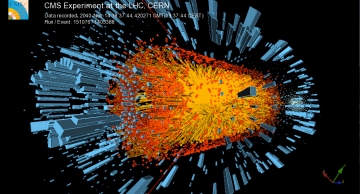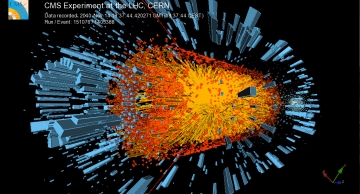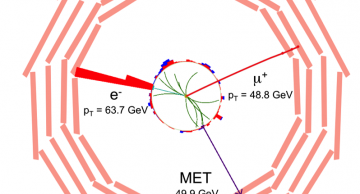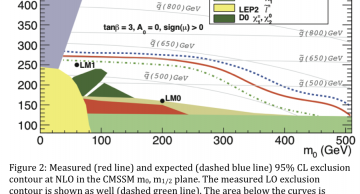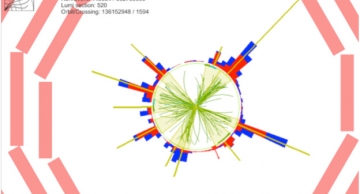The PAS of EXO-10-022 "Search for New Ditau Resonances in pp Collisions at sqrt(s) = 7 TeV" is now public. You find it on CDS at
http://cdsweb.cern.ch/record/1367127?ln=en
Congratulations to all involved.
Best regards,
Roberto Tenchini and Gigi…
News
|
rusace01 |
Physics
|
rusace01 |
Physics
The PAS of EXO-11-005 "Search for T/t' decays to tZ in pp Collisions at sqrt(s) = 7 TeV" is now public. You can find it on CDS at http://cdsweb.cern.ch/record/1367130?ln=en
Congratulations to all involved.
Best regards,
Roberto Tenchini and Gigi…
|
ellie |
Physics
The PAS of BTV-11-001 "b-tagging performance (efficiency and mistag rate) measurements from CMS" is now public. You find it on CDS at http://cdsweb.cern.ch/record/1366061?ln=en
Congratulations to all involved.
Best regards,
Roberto Tenchini and Gigi…
|
nsaoulid |
Physics
We are living in perhaps the most exciting times of the past few decades in High Energy Physics: searching for the Higgs boson, as well as expected and unexpected new physics with one of the most elaborate accelerators ever built, and with complex…
|
lucas |
Physics
A search for physics beyond the standard model in events with at least three leptons and any number of jets is presented. The data sample corresponds to 35 inverse picobarns of integrated luminosity in pp collisions at sqrt(s) = 7 TeV collected by…
|
lucas |
Physics
Curious minds might wonder why the LHC, which successfully ran at 7 TeV during the pp run of 2010 began the new year with proton collisions at a significantly less energy of 2.76 TeV. The fact is that this lower energy allowed experiments such as…
|
lucas |
Physics
The CMS collaboration is presenting its latest results this week at the annual Quark Matter conference, held this year in Annecy, France. The results are based on analyses of data collected during the LHC's heavy-ion run in the last two weeks of…
|
achintya |
Physics
In our Universe today, quarks are always bound together by gluons to form "composite" particles such as protons and neutrons. The Quark-Gluon Plasma, or QGP, often described as a soup-like medium, is a hot, dense state in which these quarks and…
|
achintya |
Physics
The CMS experiment has made several unique measurements using data from LHC collisions of lead nuclei (PbPb, November 2010) at centre-of-mass energies of 2.76 TeV per nucleon pair.
Phenomena measured for the first time in nucleus-nucleus collisions…
|
lucas |
Physics
The CMS Collaboration at CERN released a paper today entitled "First Measurement of W+W− Production and Search for Higgs Boson in pp Collisions at √s = 7 TeV". The paper is the first produced by CMS that includes searches for the Higgs boson at the…
|
lucas |
Physics
The Compact Muon Solenoid (CMS) Collaboration at CERN’s Large Hadron Collider (LHC) has announced the results of the search for supersymmetry (SUSY) in events with jets and missing transverse energy. The search is based on data accumulated by the…
|
achintya |
Physics
The CMS experiment at CERN's Large Hadron Collider (LHC) has completed a search for microscopic black holes produced in high-energy proton-proton collisions. No evidence for their production was found and their production has been excluded up to a…

